
Your website has exactly 0.05 seconds to make a first impression. That’s how long users take to form an opinion about your design, and it determines whether they stay or leave immediately.
The numbers tell a stark story: 88% of online consumers won’t return after a bad user experience. Even more concerning, 70% of users abandon websites due to poor usability alone. UI UX design business impact extends far beyond aesthetics—it directly affects whether your business survives in the digital marketplace.
The opportunity, however, is equally compelling. Companies that invest in UX/UI design see a return on investment of up to 100% or more. Organizations that streamlined their sign-up processes based on user feedback achieved a 50% reduction in drop-off rates.
Why does UX matter for business success? Positive user experiences create higher retention rates, significantly increasing customer lifetime value. Quality design reflects professionalism and builds brand credibility, turning visitors into loyal customers who return and recommend your products to others.
The design landscape continues to evolve as we approach 2025. AI tools are changing how designers work, shifting their role toward curation and strategic thinking. Voice interfaces are reshaping user interactions, while the demand for responsive design across all platforms has become non-negotiable.
This article explores why every business must prioritize user experience design in 2025 and beyond. You’ll discover exactly how the right design approach can improve your digital presence and bottom line—supported by real data and practical strategies you can implement.
Why UX/UI design matters for modern businesses
“People ignore design that ignores people.” — Frank Chimero, Designer
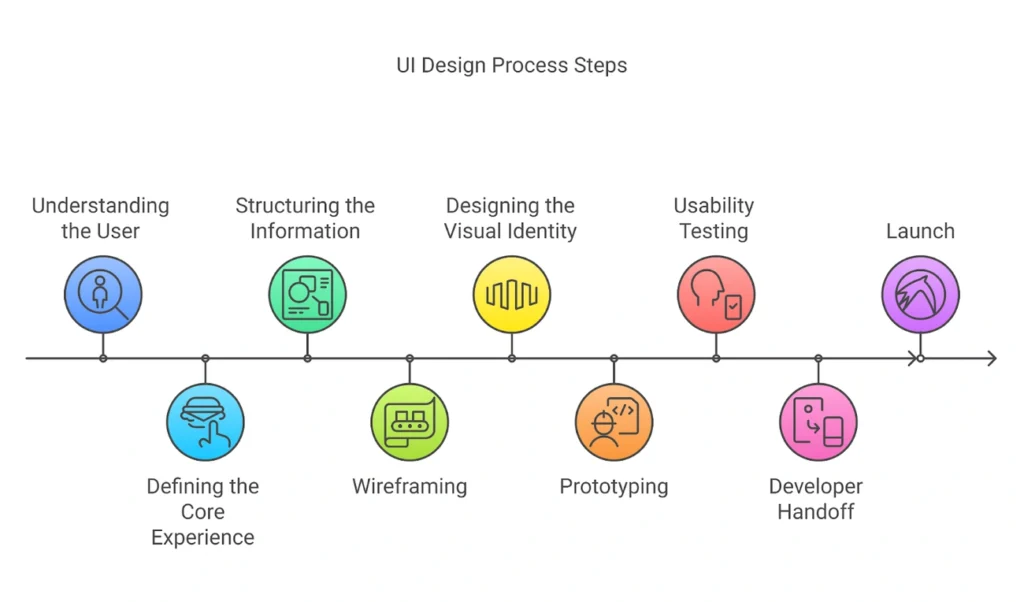
Image Source: Aufait UX
Business success in today’s digital environment depends on how users interact with your digital products. As customers conduct more daily interactions online, providing seamless digital experiences has become essential for growth and success. Here’s exactly why UI/UX design deserves your attention in 2025.
First impressions shape user trust
Users form an opinion about a website’s design in just 0.05 seconds. This lightning-fast judgment determines whether they’ll stay or leave immediately. When customers land on your site, you have mere seconds to influence them—making UX optimization necessary for gaining trust and ensuring user retention.
Trust builds through small moments of reassurance and consistency rather than flashy design elements. A clean, professional interface creates legitimacy, while checkout pages displaying security badges make users feel protected. These subtle details work in the background of every great user experience.
The stakes are high: 88% of users won’t return after a bad experience. Your design doesn’t just influence first impressions—it determines whether you’ll get a second chance with potential customers.
Better usability leads to higher engagement
Effective UX/UI design directly impacts user engagement with your product. According to Forrester Research, a well-designed user interface can increase a website’s conversion rate by up to 200%, while better UX design can boost conversion rates by up to 400%. These numbers represent business transformation, not minor improvements.
Outstanding UI/UX design includes:
- Interactive, navigable content that keeps people on your site longer
- Smooth navigation that enhances user satisfaction
- Faster load times (improving site speed by 0.1% can increase conversions by 10% for travel sites and 8% for retail sites)
Google reports that 53% of mobile users abandon sites taking longer than three seconds to load. Effective design optimizes loading times and guides users smoothly through your product, reducing these friction points.
Good design improves customer retention
Acquiring new customers typically costs more than retaining existing ones, making customer retention especially valuable. Thoughtful UI/UX design offers smooth navigation and ease of use that encourages customers to return repeatedly.
The right UI/UX design enhances customer satisfaction, which builds brand loyalty. Satisfied customers become advocates who market your products to others. Facebook exemplifies this approach—through nurturing interactions, great UI, and feature upgrades, they achieved a 5% increase in daily active users.
According to Motista’s research, customers who feel emotionally connected to a brand have a 306% higher lifetime value. This emotional connection isn’t optional—it’s essential for long-term business sustainability.
Strong UI/UX boosts brand credibility
Consistency in design elements like colors, fonts, and layout across platforms ensures cohesive brand identity. This consistency reinforces brand recognition and creates reliability and trustworthiness. Lucidpress reports that consistent brand presentation across all platforms can increase revenue by up to 23%.
When branding and UX don’t work together, users notice and trust suffers. Consider these examples: luxury brands with clunky websites make users question product quality, while tech companies claiming innovation with outdated digital presences make users doubt their credibility. These mismatches lead to higher bounce rates, negative reviews, reduced referrals, and lost conversions.
Effective collaboration between branding and UX/UI design creates authentic, engaging experiences that users want to explore and return to repeatedly.
UI/UX design isn’t about aesthetics—it’s a critical business investment. Robert Pressman’s research shows that “For every dollar spent to resolve a problem during product design, $10 would be spent on the same problem during development, and multiply to $100 or more if the problem had to be solved after the product’s release”. Every dollar invested in UX returns $10 to $100, making it one of the most cost-effective business decisions you can make.
The UX/UI Design Process Explained
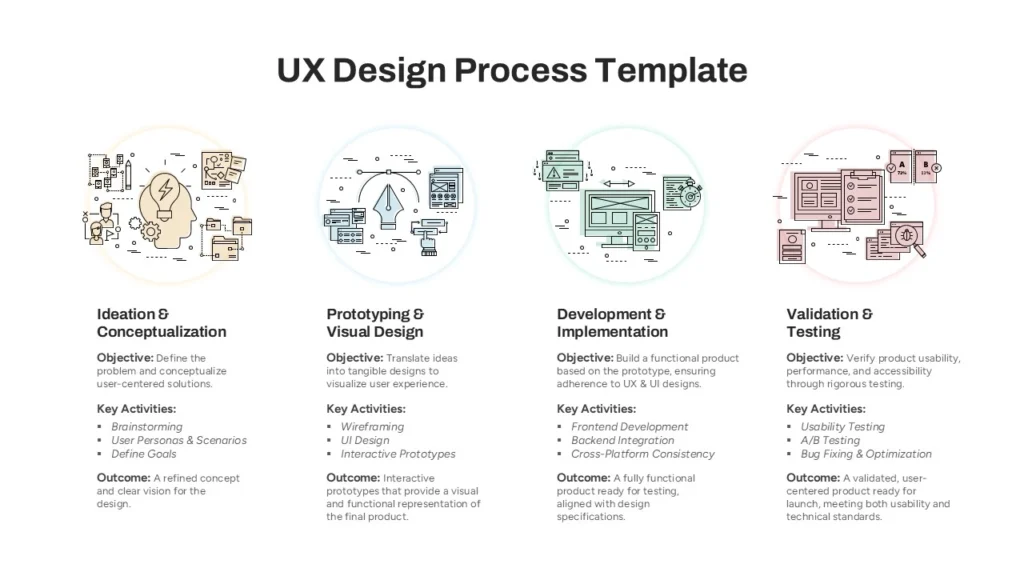
Image Source: SlideKit
Creating exceptional digital experiences requires a systematic, user-centered process. The UX/UI design journey follows distinct phases, each building toward products that solve real problems while driving business results.
Research and User Analysis
Understanding your users comes first, always. This foundation phase involves gathering both quantitative data (what users do) and qualitative insights (why they do it). Effective teams use multiple research methods—interviews, surveys, contextual inquiries—to build a complete picture of user needs.
Before proposing any solutions, designers must develop deep understanding of user behaviors, motivations, and pain points. This approach prevents teams from building unnecessary features or products that miss the mark entirely.
As one principle states: “fall in love with the problem, not the solution.” This mindset ensures you address genuine user needs rather than assumed ones.
Creating Personas and Mapping Journeys
Research data transforms into actionable tools through two key activities. User personas represent your typical users based on actual research findings, not assumptions. These fictional characters help teams stay focused on real user needs throughout the design process.
Journey mapping visualizes how users interact with your product across different touchpoints. This technique compiles user actions into a timeline, then adds emotions to create a comprehensive narrative. Journey maps reveal hidden pain points and opportunities that might otherwise go unnoticed—making them essential for informed ui ux design business decisions.
Wireframes and Interactive Prototypes
Visual representation starts with wireframes—skeletal blueprints that establish layout and structure without visual distractions. Wireframes focus on functionality and user flow before aesthetics enter the picture.
These wireframes then evolve into interactive prototypes:
- Low-fidelity prototypes: Simple clickable mockups for testing basic user flows
- High-fidelity prototypes: Realistic simulations with detailed visuals and interactions
Prototyping delivers tremendous value by identifying and fixing problems early in the process. Studies consistently show this approach costs significantly less than addressing issues after launch.
User Testing and Feedback Loops
Real users interacting with prototypes provide crucial insights before final development begins. This phase involves observing users complete predefined tasks while collecting both qualitative observations and quantitative metrics.
User testing validates assumptions and uncovers usability issues that weren’t visible during design. The process follows clear steps: define goals, recruit appropriate participants, conduct tests, analyze results, implement improvements.
This iterative approach ensures the final product truly meets user needs rather than reflecting designer assumptions.
Final Development and Launch
Once testing confirms the design effectively serves user needs, detailed specifications go to developers. High-fidelity prototypes serve as documentation, showing not just appearance but functionality.
Throughout development, designers and developers collaborate closely to maintain the intended user experience. This phase often requires clear communication and additional iterations as technical constraints emerge.
Post-Launch Improvements
Launch day marks the beginning, not the end. Research shows 80% of users abandon apps within three months if products fail to evolve with changing needs. Successful products thrive on continuous improvement based on post-launch data.
Post-launch activities include analyzing user behavior through heatmaps and analytics, gathering feedback through surveys, and conducting A/B testing on specific elements. These ongoing efforts ensure your digital product remains relevant and continues delivering business value over time.
This systematic process demonstrates why user experience design matters for business success beyond aesthetics. Following this structured approach creates products that genuinely serve user needs while supporting business objectives.
Key features of effective UX/UI design
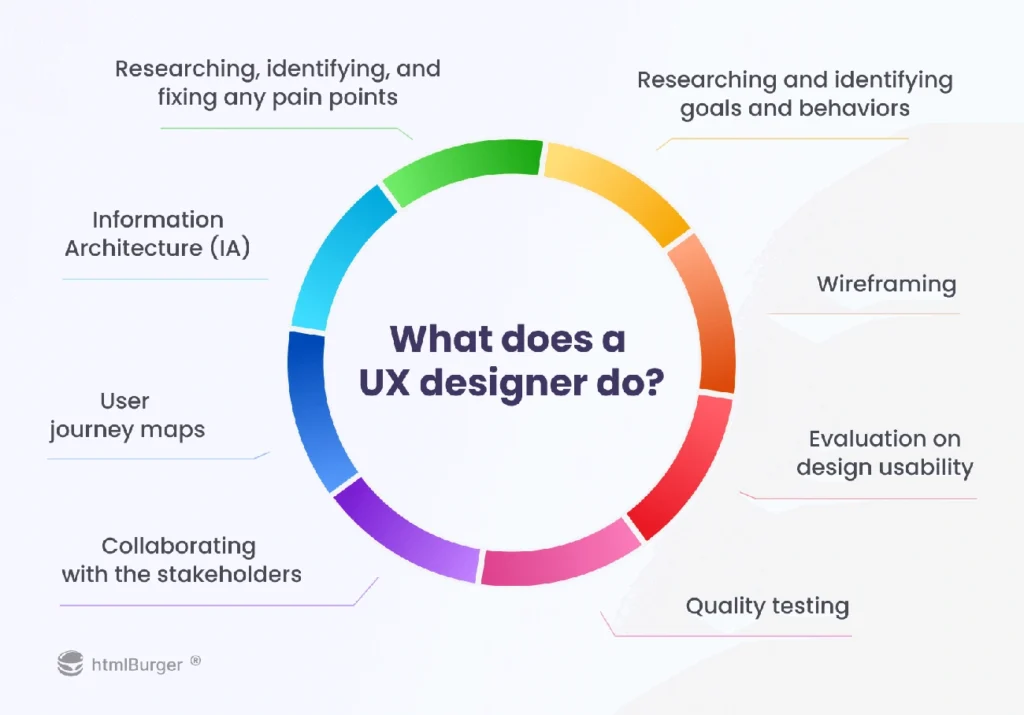
Image Source: htmlBurger
Effective UI/UX design stands on four essential pillars that determine whether digital products merely function or genuinely connect with users. Understanding these fundamental features helps you create experiences that serve both user needs and business goals.
User-centric approach
Understanding users’ needs, preferences, and limitations forms the cornerstone of effective design. User-centered design (UCD) brings users into the process from start to finish, reducing guesswork about design choices and preventing development of unnecessary features.
This approach requires comprehensive research about your target audiences. User interviews, surveys, and analytics provide valuable data on demographics, motivations, and pain points. Creating detailed user personas and journey maps helps you visualize how users interact with products across different touchpoints, revealing opportunities for improvement.
Empathy drives user-centric design. This emotional connection proves crucial for creating designs that genuinely resonate with users. Through empathy mapping, designers consider what users are thinking, feeling, saying, and doing—addressing both emotional and cognitive aspects of the user experience.
Consistency across all screens
Design consistency creates a smooth, predictable experience that builds familiarity and trust. When users encounter consistent design patterns, they can transfer knowledge from one part of your application to another, reducing cognitive load and increasing efficiency.
Consistency in UI/UX encompasses three key dimensions:
Visual consistency: Uniform typography, color palettes, and iconography across all touchpoints Functional consistency: Predictable behavior of interactive elements like buttons and forms
Information architecture: Logical organization of content throughout the experience
A design system with component libraries, style guides, and pattern documentation proves essential for maintaining unified experiences across platforms. This approach ensures visual and functional elements strengthen rather than dilute your brand identity.
Responsive design for all devices
Responsive design adapts interfaces to different screen sizes and orientations while maintaining functionality across devices. Rather than creating separate designs for each platform, responsive approaches use fluid layouts and media queries to adjust dynamically based on the viewing environment.
The same HTML serves all devices, using CSS to change appearance as the viewport grows or shrinks. This approach offers clear advantages for UI UX design business implementation:
Using a single codebase makes development faster than creating distinct sites for different devices. It’s also future-proof—if new device sizes emerge, responsive code can support them without requiring complete redesigns.
However, simply ensuring elements fit within a page isn’t sufficient. For responsive design to succeed, the experience must remain usable across all screen resolutions and sizes.
Accessibility for all users
Accessibility ensures all members of your target audience have equal access to your product regardless of their abilities. This principle extends beyond accommodating disabilities—it creates designs usable in multiple settings to meet varying user needs.
The primary motivation behind accessibility is ensuring products and services remain genuinely user-centered, with user needs taking center stage. Accessibility in design recognizes diversity and promotes equal access as fundamental standards.
Designing for accessibility encompasses multiple considerations: screen reader compatibility, keyboard navigation, color contrast, typography legibility, and alternatives for visual and audio content. These elements don’t just help individuals with disabilities—they improve the experience for everyone.
These four features work together to create experiences that truly connect with users while driving measurable business outcomes. Each pillar reinforces the others, forming a cohesive foundation for effective design.
Common UX/UI Mistakes Businesses Should Avoid
“Rule of thumb for UX: More options, more problems.” — Scott Belsky, Chief Product Officer at Adobe and Behance co-founder
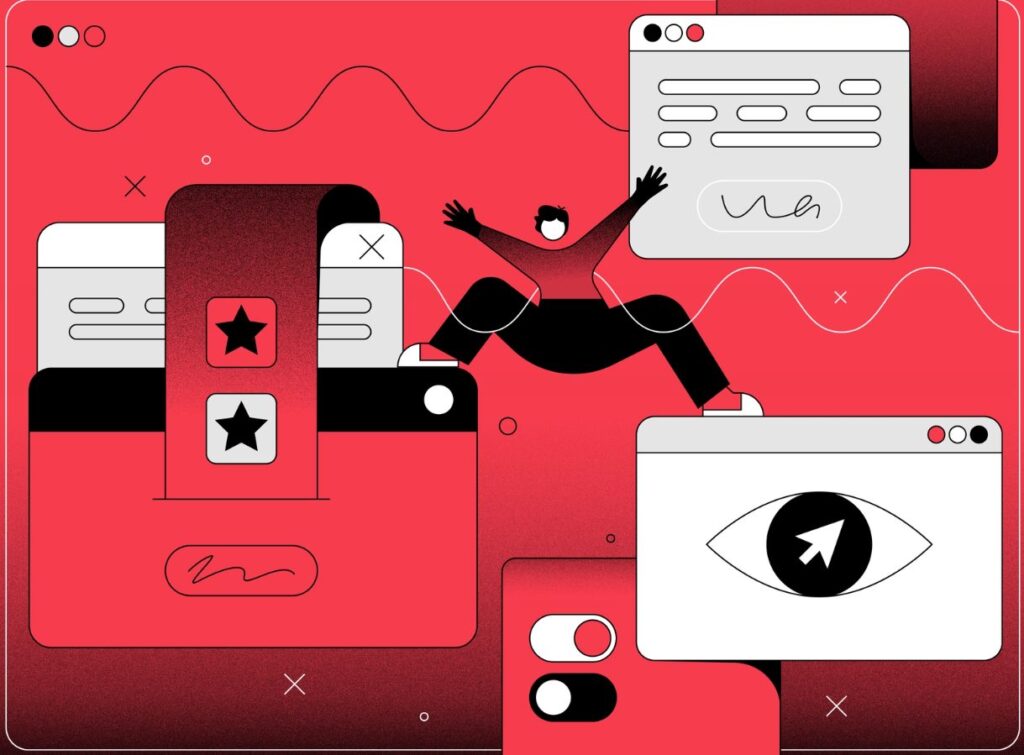
Image Source: Fireart Studio
Even visually appealing digital products can fail users when fundamental design principles get overlooked. What causes these failures, and how can you avoid them?
Inconsistent design elements
When navigation menus shift locations between pages or buttons look different across screens, users become confused and frustrated. This confusion forces users to constantly relearn how to interact with your interface.
Design inconsistency creates a disjointed experience that erodes trust and damages brand perception. Users expect predictable patterns—when those patterns break, they question your professionalism and reliability.
The business impact extends beyond user frustration. Inconsistent design reduces credibility, undermines marketing efforts, and creates technical debt over time. For larger brands with extensive digital footprints, this inconsistency dilutes brand identity and makes recognition harder.
Overloaded or cluttered interfaces
How much information can users process at once? Less than you might think.
Information overload occurs when users face excessive content, options, or complexity. This cognitive strain manifests in several ways:
- Complex interfaces with too many elements overwhelm working memory
- Non-intuitive designs force users to exert extra mental effort
- Inconsistent patterns require constant adjustment, causing mental fatigue
- Too much simultaneous information floods working memory
The solution involves simplifying interfaces, using white space effectively, and removing irrelevant elements. Breaking information into digestible chunks and limiting choices prevents overwhelm while enhancing engagement.
Neglecting mobile responsiveness
With mobile traffic accounting for approximately 55% of web traffic, ignoring mobile optimization becomes a critical oversight. Yet many businesses swing too far in the opposite direction, creating poor desktop experiences with excessive white space and poor balance.
Mobile-first approaches sometimes result in content dispersion—overly large, stretched-out content requiring excessive scrolling on desktop devices. This increases cognitive load, interaction costs, and user frustration.
Effective responsive design delivers only what users need when they need it, optimizing for all screen sizes rather than prioritizing one at the expense of others.
Unclear or hidden call-to-actions
CTAs bridge user intent and conversion. When you bury them mid-content, use colors that blend with your design, or offer too many options, you create choice paralysis.
Vague language compounds the problem. Instead of “Learn More” or “Click Here,” use specific, action-oriented language that tells users exactly what happens next.
Effective CTAs should be prominently placed (both above the fold and at natural conclusion points), use contrasting colors, and employ concise, clear directives. This clarity ensures users understand exactly what action to take next.
How to choose the right UX/UI design partner

Image Source: Netguru
Finding the right UX/UI design partner can make the difference between a digital product that drives business results and one that drains your budget. Here’s how to evaluate potential partners beyond impressive portfolios and polished presentations.
Review their past work and case studies
Look beyond pretty designs to assess their problem-solving capabilities. Strong portfolios demonstrate diverse projects with detailed case studies that explain specific challenges and solutions implemented.
Pay attention to these key elements:
- Problem definition: Do they clearly articulate what users needed?
- Design rationale: Can they explain why they made specific design choices?
- Results measurement: Do they show how their solutions impacted business metrics?
The depth of their case studies reveals critical thinking skills and attention to detail. Partners who can’t explain their design decisions probably can’t solve your unique challenges effectively.
Understand their design process
Ask specific questions about their methodology. A professional design partner should have a systematic approach that includes user research, persona development, prototyping, and testing phases.
Key questions to ask:
- How do you gather user insights at the project start?
- What methods do you use for prototype testing?
- How do you incorporate feedback throughout the design process?
- How does your approach align with our business goals?
Their process should balance user needs with business objectives—both matter for successful outcomes.
Check for client feedback and testimonials
Video testimonials provide more authentic insights than written reviews since they capture genuine responses. Explore reviews on Google, LinkedIn, and industry-specific platforms to get a complete picture.
Consider reaching out directly to previous clients. Ask about communication style, deadline adherence, and overall satisfaction. This extra step often reveals valuable information about how they handle challenges and pressure.
Ensure post-launch support is included
Launch day isn’t the end—it’s the beginning. Digital products require continuous improvement based on user data and changing market conditions.
Clarify what post-launch services they offer:
- User behavior analysis through analytics and heatmaps
- Feedback collection and implementation systems
- A/B testing for optimization
- Ongoing design updates and improvements
Partners who understand this long-term commitment value sustainable results over quick deliverables. This mindset often determines whether your digital product continues delivering business value over time.
The ROI of investing in UX/UI design
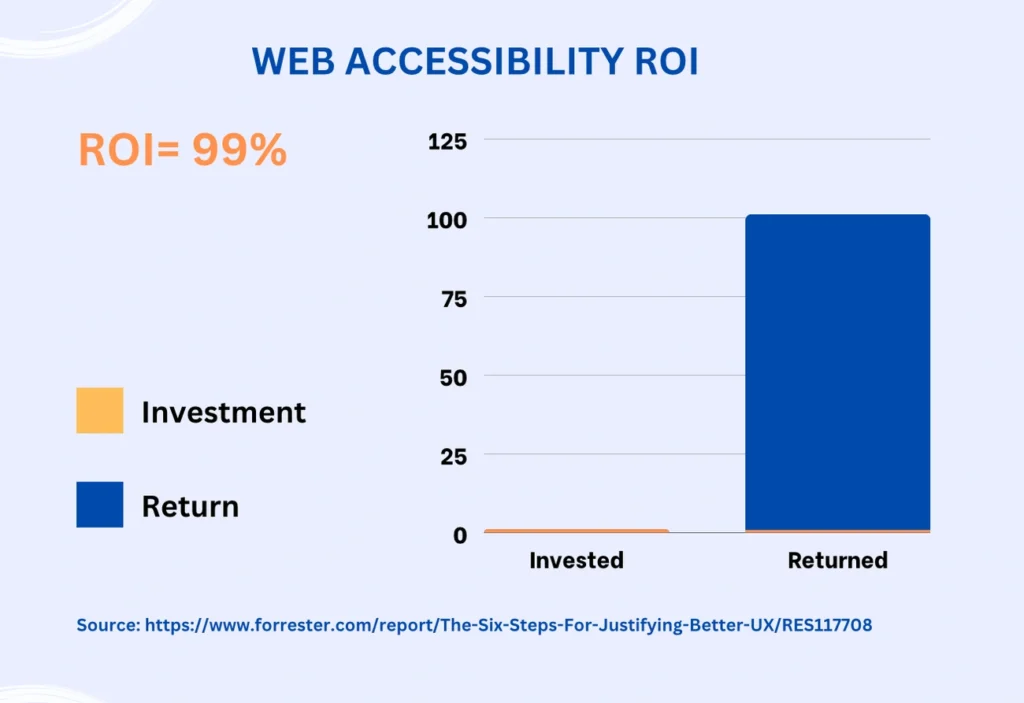
Image Source: UX Collective
Understanding the financial impact of UX/UI design helps justify investment decisions and demonstrates tangible business value. The data consistently shows that companies prioritizing user experience see measurable returns across multiple business metrics.
Higher conversion rates
The numbers behind UX investment tell a compelling story. Every dollar invested in UX yields an astonishing $100 return, representing a 9,900% ROI. This isn’t theoretical—it reflects real business outcomes when companies prioritize user experience.
A well-crafted user interface can boost website conversion rates by up to 200%, while comprehensive UX improvements can increase conversion rates by as much as 400%. These improvements translate directly to revenue growth.
Consider these real-world examples: One major e-commerce website generated an additional $300 million in revenue after simply redesigning their checkout button. HubSpot saw a 33% revenue increase, reaching $1.73 billion, after implementing UX improvements based on usability testing.
The key lies in removing friction from user journeys. When users can accomplish their goals easily, they’re more likely to complete purchases, sign up for services, or engage with your content.
Reduced customer support costs
Thoughtful design prevents problems before they occur. Effective UX design proactively addresses potential user issues, resulting in fewer support calls and reduced operational expenses.
Companies investing in proactive UX design typically experience a 20% reduction in support requests. This happens because intuitive interfaces and clear self-service information help users solve problems independently.
Microsoft observed that incorporating user-centered design principles reduced customer support interventions by 30%. This reduction translates directly to cost savings, calculated as: (number of errors) × (average recovery time) × (employee cost) × (number of employees).
When users understand how to use your product, they need less help using it. This simple principle drives significant cost reductions while improving user satisfaction.
Improved customer satisfaction scores
Customer satisfaction metrics directly correlate with UX quality. Organizations focusing on improving customer experience see a 42% improvement in retention rates, 33% increase in satisfaction scores, and 32% growth in cross-selling opportunities.
The financial impact extends beyond immediate transactions. Studies indicate that 66% of customers willingly pay more for exceptional user experiences. Additionally, 72% of customers are likely to recommend brands offering positive experiences, creating valuable word-of-mouth marketing.
These satisfied customers become your most effective advocates, reducing customer acquisition costs while increasing lifetime value. The compound effect of satisfied users creates sustainable business growth that extends far beyond the initial design investment.
UI UX design business value extends beyond aesthetics—it creates measurable improvements across key performance indicators that drive sustainable growth in today’s competitive marketplace.
Conclusion
UX/UI design isn’t optional anymore—it’s a business necessity. The evidence is clear: companies that prioritize user experience outperform those that don’t, while businesses that ignore design principles watch customers leave after a single bad interaction.
The fundamentals remain straightforward. User-centered design addresses real problems that people face when interacting with digital products. When you create interfaces that feel intuitive, you build trust. When you maintain consistency across all touchpoints, you strengthen your brand. When you design for all devices and abilities, you capture more customers.
Yet many businesses still treat design as an afterthought. They launch with inconsistent interfaces, cluttered layouts, and broken mobile experiences. These mistakes cost money—both in lost customers and expensive fixes down the road.
The choice is yours. You can continue with design approaches that frustrate users and limit growth, or you can invest in experiences that delight customers while driving measurable results.
Smart businesses understand that UX/UI design bridges the gap between what users need and what companies want to achieve. This alignment creates sustainable competitive advantages that compound over time. Your customers remember how your products make them feel, and those feelings influence every future interaction with your brand.
The question isn’t whether you can afford to invest in quality design—it’s whether you can afford not to. Your competitors are already making this investment. Your customers expect it. The only question left is when you’ll start.
FAQs
Q1. Is UX/UI design still relevant in 2025?
Yes, UX/UI design remains highly relevant in 2025. While the field is evolving with new technologies, the core principles of creating user-centered, intuitive digital experiences are more important than ever for business success. Companies that invest in UX/UI design see significant returns in terms of increased conversions, customer satisfaction, and brand loyalty.
Q2. How is AI impacting UX/UI design?
AI is transforming UX/UI design by automating certain tasks and enhancing design capabilities. However, human designers are still crucial for strategic decision-making, empathy-driven design, and translating complex user needs into meaningful digital experiences. AI is becoming a powerful tool for designers rather than a replacement.
Q3. What skills are most valuable for UX/UI designers in 2025?
The most valuable skills for UX/UI designers in 2025 include adaptability, strategic thinking, and the ability to balance user needs with business objectives. Designers need to be well-versed in user research, prototyping, and usability testing while also understanding emerging technologies and their impact on user behavior.
Q4. How can businesses measure the ROI of UX/UI design?
Businesses can measure the ROI of UX/UI design through various metrics, including increased conversion rates, reduced customer support costs, and improved customer satisfaction scores. Studies show that every dollar invested in UX can yield a return of up to $100, demonstrating the significant financial impact of good design.
Q5. What are some common UX/UI mistakes businesses should avoid?
Common UX/UI mistakes businesses should avoid include inconsistent design elements across platforms, overloaded or cluttered interfaces, neglecting mobile responsiveness, and unclear or hidden call-to-actions. These mistakes can lead to user frustration, decreased engagement, and ultimately, lost business opportunities.
Leave a Reply